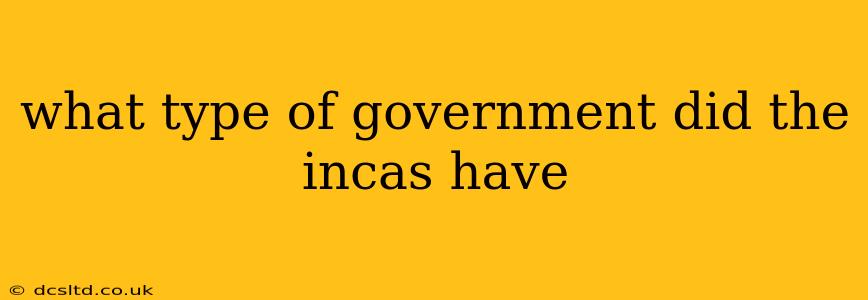The Inca Empire, spanning a vast territory across the Andes Mountains in South America, boasted a sophisticated and unique political system. While often described as an empire, understanding its governance requires moving beyond simplistic labels. It wasn't a democracy, a monarchy in the European sense, or a simple theocracy. Instead, the Inca government was a complex blend of elements, best described as a highly centralized and hierarchical state with a strong emphasis on divine rule and social control.
The Emperor: The Apex of Power
At the apex of the Inca political structure sat the Sapa Inca, or the emperor. He wasn't merely a ruler; he was considered a divine figure, a descendant of the sun god Inti. This divine status legitimized his absolute authority and ensured obedience from his subjects. The Sapa Inca controlled all aspects of life within the empire, from religious ceremonies and military affairs to economic production and social organization. Succession was traditionally hereditary, though power struggles and assassinations weren't uncommon.
The Bureaucracy: Maintaining Control Across Vast Distances
Maintaining control over such a vast and geographically challenging empire required an extensive and highly organized bureaucracy. The empire was divided into four provinces, each administered by a governor appointed by the Sapa Inca. These governors, in turn, oversaw a network of local officials responsible for collecting taxes, managing resources, and enforcing laws. This intricate system of checks and balances ensured that the emperor's will was carried out effectively across the empire.
How did the Inca government organize its vast territory?
The Inca government employed a highly effective system of organization to manage its expansive territory. This involved:
-
Provincial Governors: The empire was divided into four major provinces, each ruled by a governor appointed by the Sapa Inca. These governors were responsible for the overall administration of their respective provinces.
-
Local Officials: Beneath the provincial governors, a layered system of local officials ensured the emperor's decrees were implemented at the local level. These officials were responsible for tasks such as tax collection, resource management, and the maintenance of infrastructure.
-
Relay Runners (Chasquis): The Inca’s ingenious communication system relied on a network of relay runners, who could rapidly transmit messages across vast distances. This swift communication facilitated efficient governance and rapid response to crises.
-
Road System: The vast network of roads connecting all parts of the empire was essential for effective governance. It facilitated the movement of troops, officials, and goods, uniting the disparate regions under central authority.
Religion and the State: Intertwined Aspects of Power
Religion played a crucial role in the Inca government. The Sapa Inca was considered the supreme religious authority, responsible for overseeing temples, priests, and religious festivals. This close relationship between religious and political power further solidified the emperor's authority and ensured the compliance of the population. The religious belief system reinforced the social hierarchy and the emperor’s divine right to rule.
Was the Inca government a theocracy?
While the Inca government exhibited strong theocratic elements, labeling it solely as a theocracy is an oversimplification. While religion heavily influenced the emperor's power and legitimacy, the government's structure and functioning extended beyond purely religious concerns. The bureaucratic system, legal codes, and military organization were all integral aspects of governance independent of religious doctrines.
Social Control and the Mit'a System
The Inca government maintained its control through a sophisticated system of social control, most notably the mit'a system. This system required citizens to contribute a certain amount of labor to public works projects, such as road construction, agriculture, and mining. This system, though potentially exploitative, also provided essential infrastructure and social cohesion. It integrated the population into the state system and fostered a sense of collective responsibility.
How did the Inca government maintain control over its subjects?
The Inca government employed various strategies to maintain control, including:
-
The Mit'a System: This labor tax ensured public works projects were completed and provided a system of social control.
-
Bureaucratic Oversight: The intricate system of governors and local officials ensured that the emperor's will was carried out at all levels of society.
-
Religious Control: The close connection between religion and state reinforced the emperor's legitimacy and ensured public obedience.
-
Military Power: The Inca army played a vital role in enforcing control and suppressing rebellion.
In conclusion, the Inca government was a complex and highly centralized system characterized by a divine emperor, a vast bureaucracy, and a strong emphasis on religious and social control. Understanding its intricacies requires moving beyond simplistic categorizations and acknowledging its multifaceted nature. It was a remarkably sophisticated system for its time, successfully managing a vast and diverse empire for centuries.
